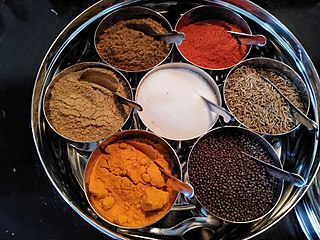
There are many ways we know the season of Autumn has begun. The calendar informs us the official date is September 22. People whose school days ended sometime in the last century associate Autumn with the beginning of school. There’s the turning of the leaves, the nights drawing in, and the nip in the air. But for most of us, Autumn begins in late August when our favorite barista offers us a Pumpkin Spice Latte, available for a limited time only.
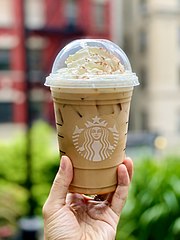
Before delving into the exciting world of pumpkin spices, I must note that Starbucks released its exotic coffee blend in 2003. At the time, naysayers said no one would purchase spiced coffee. In fact, consumers flocked to buy the coffee blended with caramel, spices, and lots of sugar. Forbes reported that in 2018, the “pumpkin spice complex” had a combined market value of over $600 million.
The Spices of Fall
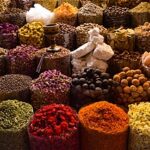
There’s nothing inherently special about the ‘pumpkin spice’ blend. You can assemble it at home with 18 parts ground cinnamon, 4 parts ground nutmeg, 4 parts ground ginger, 3 parts ground cloves, and 3 parts ground allspice. How much is a “part”? As much as you like. It could be a teaspoon or a tablespoon or more or less. Mix the parts together, and you have your own pumpkin spice blend. Sometimes people add ground cloves and or mace to taste.
A Little Spice History
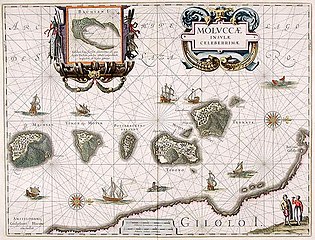
In the 15th Century, the search for spices influenced European efforts to sail around the world. Prior to that, spices came into Europe via trade routes established by the Muslim World. The resulting product was very expensive. One source reveals that during the 14th century, a pound of nutmeg had the same value as 7 fattened oxen. And nutmeg could be found only in the Banda Islands, later called the Spice Islands, a part of Indonesia.
So, if a nation or company could cut out the middle man and sail directly to the source, it would be extremely wealthy. In the early 17th Century, the Dutch East India Company took exclusive control of the region, and used the newly available spices to create speculassakruiden, a blend of cinnamon, cloves, nutmeg, coriander seeds, aniseed, white pepper, ginger, and cardamom — a clear predecessor of pumpkin spice.
Next, The Pumpkin

That same 17th Century brought the first English settlers to America where they reluctantly came to appreciate local foods, particularly the prolific pumpkin. They could consume the mostly tasteless vegetable in soups and stews. They could roast it and bake it. Native Americans added chili peppers for flavor. The colonists added sugar and spice.
While the settlers filled their stomachs with the anti-oxident that is pumpkin, their English cousins laughed at them for eating the squash and called them ‘pumpkin-blasted brains’ for choosing frontier America over civilized England.
Lacking what we think of as baking equipment, the early settlors came up with what now seems a unique way to make pumpkin pie by hollowing out the pumpkin, filling the shell with a mix of milk, honey and spices to make a custard, and then roasting the filled pumpkin in hot ashes. If you want to try this method, you can find a modern recipe here.
During the 19th Century pumpkin pie took on modern characteristics as American bakers made pumpkin pie with whatever spices they had on hand. Most often, these included cinnamon. But, as anyone who has ever carved a pumpkin knows, it takes a lot of work to pulp a pumpkin.
Pumpkin Spice Blend is Born
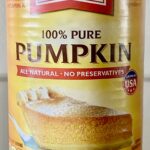
Then, in 1929, Libby’s came out with the first canned pumpkin pulp, the same product many of us still use for baking pumpkin based foods.
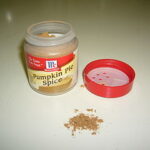
Five years later, in 1934, McCormick, then the largest purveyor of spices, came out with the first “Pumpkin Spice Mix,” and pumpkin baked goods became the most popular desserts of the season.
In 1936, the Washington Post published “Spice Cake of Pumpkin Newest Dish: Delicacy Tempting to All Appetites and Easy to Prepare. Ideal Dessert for Family Dinner, Healthful for Children.” The recipe shown below had no actual pumpkin pulp, but it did feature pumpkin spices.*
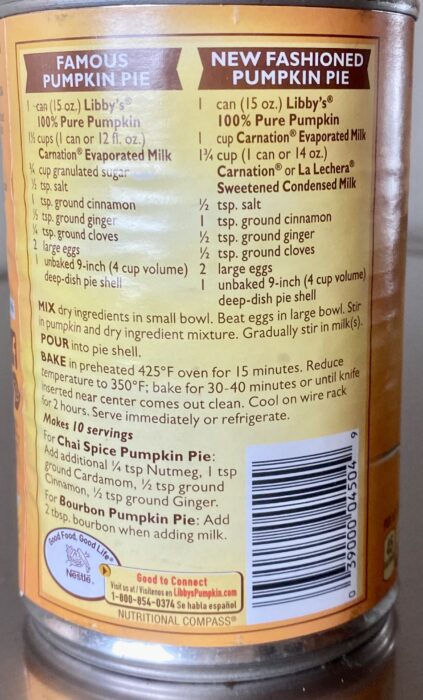
In 1950 Libby’s 100% Pure Pumpkin printed a classic pumpkin pie recipe that has become a favorite across generations on the side of its can.
Pumpkin Spice Is In Almost Everything
From its humble beginnings as a spice mixture for bakers, pumpkin spice now infuses countless products. Among them: Bailey’s Pumpkin Spice Liqueur; Burt’s Bees Pumpkin Spice Lip Balm; Captain Morgan Jack-O’Blast Pumpkin Spice Rum in a pumpkin shaped bottle; Greenies Pumpkin Spice Dental Dog Treats; Mrs. Meyer’s Clean Day Multi-Surface Everyday Cleaner, Pumpkin Scent; and Limited Edition Pumpkin Spice Spam. In short, this is the time of year when we are surrounded by the scent and flavors of pumpkin spice.
* 1936 Recipe for Pumpkin Spice Cake The baker can use the pumpkin spice mix or mix her own spices.Cream 1/2 cup shortening well and add 1-1/2 cups brown sugar. Mix until light and fluffy. Add 4 egg yolks, beaten until thick. Sift 3 cups of cake flour once before measuring. Add 4 tsp baking powder, 1/2 tsp salt, 1 tsp cloves, 1 tsp cinnamon, 1 tsp nutmeg. Sift all together three times. Add flour mixture alternating with 1 cup milk. Beat well after each addition. Bake in 350 degree oven.
🎃 🎃 🎃
Illustrations
Spice Box by Testmaskara
Starbucks Grande Iced Pumpkin Spice Latte by JimmyStardust.
Spice Bazaar by Christophe Schindler.
Map of the Spice Islands by Blaeu, 1630.
Pumpkins in Geneseo NY. Attribution: Benjamin D. Esham / Wikimedia Commons.
McCormick Pumpkin Pie Spice by Stephen Witherden.
1936 Spice Cake Recipe from the Honolulu Advertiser
Shannon Dwyer. “The 20+ Coolest Pumpkin Spice Products to Try This Fall.” The Real Deal. Oct 4, 2021.
Dań Nosowicz. “The Fascinating Journey of How Pumpkin Spice Found Its Way Into Our Lattes.” Better Homes & Gardens. Aug. 17, 2020.
Audrey Stanton. “The History of Pumpkin Spice.” The Good Trade.

Sandra Wagner-Wright holds the doctoral degree in history and taught women’s and global history at the University of Hawai`i. Sandra travels for her research, most recently to Salem, Massachusetts, the setting of her new Salem Stories series. She also enjoys traveling for new experiences. Recent trips include Antarctica and a river cruise on the Rhine from Amsterdam to Basel.
Sandra particularly likes writing about strong women who make a difference. She lives in Hilo, Hawai`i with her family and writes a blog relating to history, travel, and the idiosyncrasies of life.

